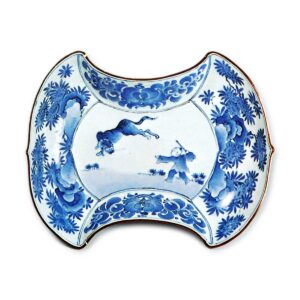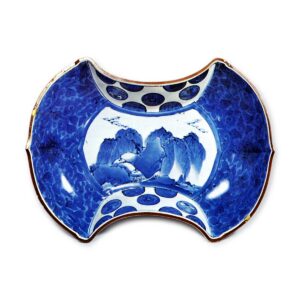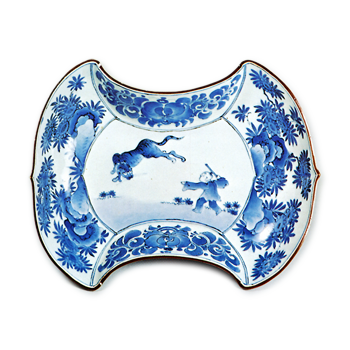

Both are rather deep flat bowls in the shape of a bronze weight with rouged edges. The depiction of underglaze blue in both cases is truly elegant, and they are thought to have been made between the Enpo and Genroku periods, when Arita’s underglaze blue technique was at its peak. They have a similar flavor to Nabeshima underglaze blue and white, and also have something in common with Kakiemon-style underglaze blue.
This underglaze blue and white copper-plated bowl with arabesque design is decorated with a Kakufuku inscription inside the base and has an arabesque design on the rim in the style of an orizushi branch. The outside of the base is decorated with a thunderbolt motif.
The underglaze blue and white copper-plated bowl also has a Kakufuku inscription inside the base and an arabesque rim pattern with a flower in the center on the side of the base, which is similar to the design on the reverse side of Koya plates. These are called “Ai-Kutani” by some sukiya (tea ceremony masters), but they were not made in Kutani, but in Arita.



